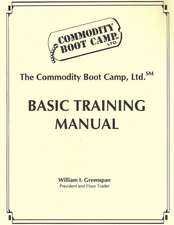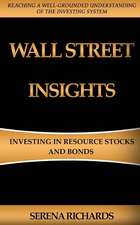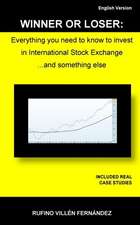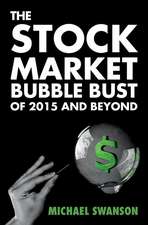Quantitative Trading – How to Build Your Own Algorithmic Trading Business, Second Edition: Wiley Trading
Autor EP Chanen Limba Engleză Hardback – 15 sep 2021
Master the lucrative discipline of quantitative trading with this insightful handbook from a master in the field
In the newly revised Second Edition of Quantitative Trading: How to Build Your Own Algorithmic Trading Business, quant trading expert Dr. Ernest P. Chan shows you how to apply both time-tested and novel quantitative trading strategies to develop or improve your own trading firm.
You'll discover new case studies and updated information on the application of cutting-edge machine learning investment techniques, as well as:
* Updated back tests on a variety of trading strategies, with included Python and R code examples
* A new technique on optimizing parameters with changing market regimes using machine learning.
* A guide to selecting the best traders and advisors to manage your money
Perfect for independent retail traders seeking to start their own quantitative trading business, or investors looking to invest in such traders, this new edition of Quantitative Trading will also earn a place in the libraries of individual investors interested in exploring a career at a major financial institution.
Din seria Wiley Trading
-
 Preț: 367.29 lei
Preț: 367.29 lei -
 Preț: 301.14 lei
Preț: 301.14 lei - 8%
 Preț: 394.83 lei
Preț: 394.83 lei - 9%
 Preț: 621.56 lei
Preț: 621.56 lei - 8%
 Preț: 364.89 lei
Preț: 364.89 lei -
 Preț: 352.61 lei
Preț: 352.61 lei -
 Preț: 329.07 lei
Preț: 329.07 lei -
 Preț: 424.60 lei
Preț: 424.60 lei -
 Preț: 337.69 lei
Preț: 337.69 lei -
 Preț: 337.64 lei
Preț: 337.64 lei - 8%
 Preț: 467.47 lei
Preț: 467.47 lei - 8%
 Preț: 371.75 lei
Preț: 371.75 lei - 8%
 Preț: 429.86 lei
Preț: 429.86 lei -
 Preț: 380.10 lei
Preț: 380.10 lei - 8%
 Preț: 400.29 lei
Preț: 400.29 lei -
 Preț: 335.58 lei
Preț: 335.58 lei -
 Preț: 327.32 lei
Preț: 327.32 lei -
 Preț: 188.54 lei
Preț: 188.54 lei -
 Preț: 343.36 lei
Preț: 343.36 lei -
 Preț: 386.24 lei
Preț: 386.24 lei - 8%
 Preț: 395.25 lei
Preț: 395.25 lei - 8%
 Preț: 551.90 lei
Preț: 551.90 lei -
 Preț: 362.92 lei
Preț: 362.92 lei -
 Preț: 304.21 lei
Preț: 304.21 lei - 8%
 Preț: 373.18 lei
Preț: 373.18 lei -
 Preț: 304.44 lei
Preț: 304.44 lei -
 Preț: 371.32 lei
Preț: 371.32 lei -
 Preț: 379.66 lei
Preț: 379.66 lei -
 Preț: 277.14 lei
Preț: 277.14 lei -
 Preț: 338.07 lei
Preț: 338.07 lei -
 Preț: 328.63 lei
Preț: 328.63 lei -
 Preț: 228.07 lei
Preț: 228.07 lei - 8%
 Preț: 382.49 lei
Preț: 382.49 lei -
 Preț: 381.20 lei
Preț: 381.20 lei -
 Preț: 289.93 lei
Preț: 289.93 lei -
 Preț: 336.99 lei
Preț: 336.99 lei -
 Preț: 354.80 lei
Preț: 354.80 lei - 8%
 Preț: 427.85 lei
Preț: 427.85 lei - 8%
 Preț: 469.69 lei
Preț: 469.69 lei -
 Preț: 264.76 lei
Preț: 264.76 lei - 8%
 Preț: 564.42 lei
Preț: 564.42 lei - 8%
 Preț: 372.97 lei
Preț: 372.97 lei - 8%
 Preț: 593.37 lei
Preț: 593.37 lei -
 Preț: 273.41 lei
Preț: 273.41 lei - 8%
 Preț: 538.51 lei
Preț: 538.51 lei - 8%
 Preț: 605.71 lei
Preț: 605.71 lei - 8%
 Preț: 537.53 lei
Preț: 537.53 lei - 8%
 Preț: 441.38 lei
Preț: 441.38 lei -
 Preț: 380.10 lei
Preț: 380.10 lei - 8%
 Preț: 555.51 lei
Preț: 555.51 lei
Preț: 346.06 lei
Nou
66.23€ • 68.89$ • 54.67£
Carte disponibilă
Livrare economică 20-26 martie
Livrare express 07-13 martie pentru 42.93 lei
Specificații
ISBN-10: 1119800064
Pagini: 256
Dimensiuni: 167 x 236 x 25 mm
Greutate: 0.47 kg
Ediția:2nd Edition
Editura: Wiley
Seria Wiley Trading
Locul publicării:Hoboken, United States



















